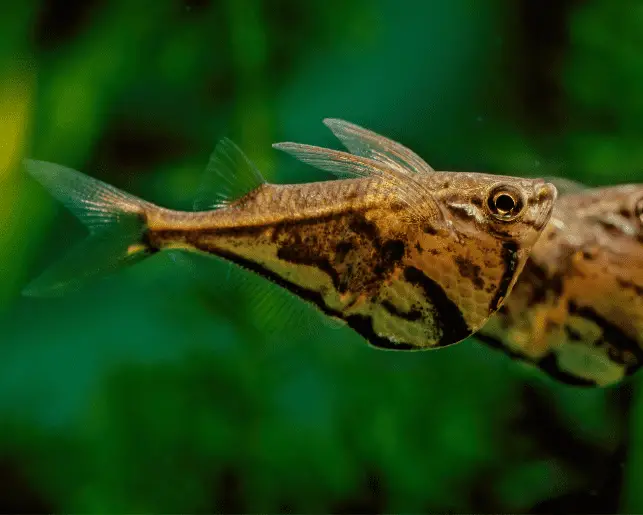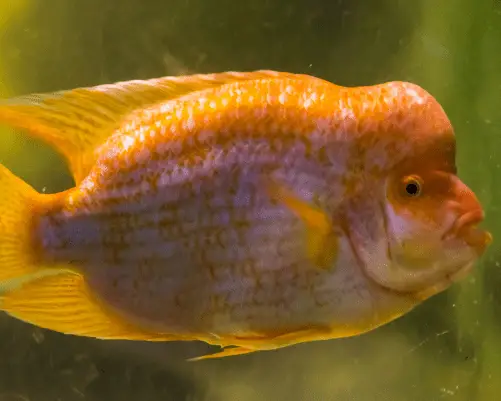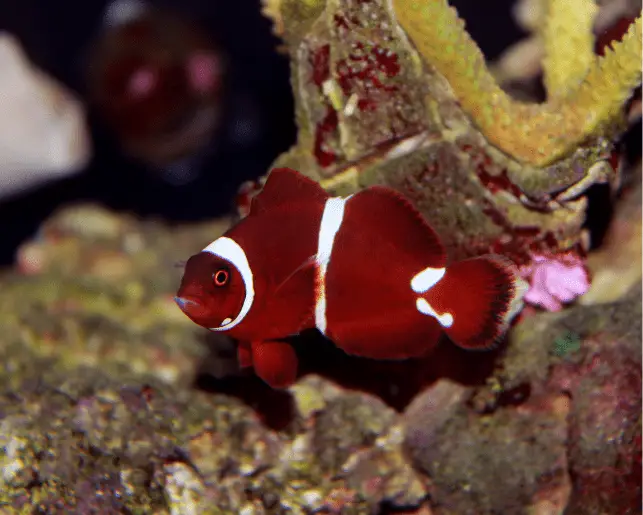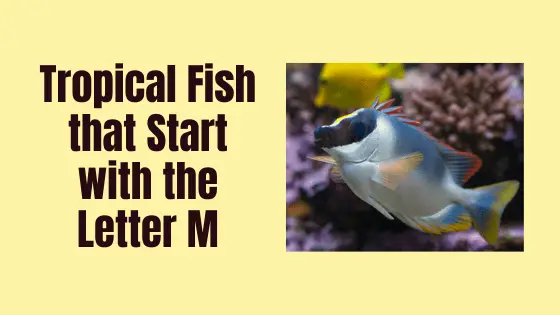Did you know there are well over 30,000 different species of tropical fish identified? This number continues to rise as more species are discovered.
This article will give you a list of our 7 favourite tropical fish beginning with the letter M.
Some you may have heard of, whilst some I am sure you won’t as they are more unusual. We are using their common names, as who actually uses their scientific names when popping into the local pet shop?! I have included the scientific names as well though for the nerdy types.
For the purpose of variation (and because, quite frankly, some of these letters were hard to research!), we may have included some saltwater fish as well. These are clearly marked, as rule number 1 in the world of fishkeeping is that you can’t mix your freshwater fish with your saltwater fish.
Tropical Fish that Start with the Letter M.
- Marbled Hatchetfish
- Moonlight Gourami
- Midas Cichlid
- Milawi Eyebiter
- Mouse Botia
- Maroon Clownfish (saltwater)
- Magnificent Foxface (saltwater)
Marbled Hatchetfish.

Scientific name: Carnegiella strigata.
The uniquely shaped Marbled Hatchetfish can grow up to about 2 inches and originates from the northern countries in South America.
They get their name from their shape. This shape makes them extremely aerodynamic and able to quickly leap above the water if needing to get out of any danger quick sharp. They are quite the little jumper as well, with them being able to leap up to 4 feet above the water level! Hopefully, common sense will tell you that these guys have to live in a covered fish tank. or you may find one sat next to you on the sofa!
The Marbled Hatchetfish is perfect for a community tank as they are very social and placid. They need to be in a nice deep tank though, with lots of swimming space.
Moonlight Gourami.

Scientific name: Trichopodus microlepis.
The Moonlight Gourami gets its name from their slightly luminous moonlight colouring. They look very shiny in the tank, a little bit like they are made out of tinfoil!
They can grow up to 6 inches in the right water conditions and are a peaceful species.
They are what is known as a labyrinth fish, so you may see them shooting to the surface of the water to take a big gulp of air. This is perfectly normal and nothing to worry about.
Moonlight Gouramis love to be surrounded by plants, and they are a big fan of floating plants to give them that feeling of protection.
Midas Cichlid.

Scientific name: Amphilophus citrinellus.
The Midas Cichlid gets its name due to their golden colour.
It is very easy to determine the males from the females as the males have a very pronounced lump on their heads, which is called a nuchal hump.
The Midas Cichlid originates from Costa Rica and Nicaragua and can grow to an impressive 12 inches.
They are not the most social fish in the world. They like to destroy anything in the tank, and aren’t too keen on being part of any type of community.
They need a lot of space and frequent partial water changes as they are greedy buggers, so have a lot of waste.
Milawi Eyebiter.

Scientific name: Dimidiochromis compressiceps.
I think you can probably guess from the name of this fish, that it isn’t the friendliest of species…
Let’s start with the positive points. It’s a lovely looking fish! A deep coloured blue with a red tipped dorsal fin.
The Malawi Eye-biter is a predatory fish. Anything very small is gobbled up whole. Anything bigger and the Malawi Eye-biter will lie in wait until an unsuspecting fish approaches and then it will pounce, aiming for the eyes.
They cannot live with anything smaller than them as they will just get eaten.
Mouse Botia.

Scientific name: Yasuhikotakia morleti.
The Mouse Botia is a member of the loach family, and is sometimes referred to as a Skunk Loach.
They have 2 pairs of barbels on their mouth, which is definitely mouse-like, as well as a long black stripe that goes from its nose to its tail, hence the Skunk Loach reference.
They can grow up to 4 inches, and are very peaceful. They like to live in a tank with lots of ornaments and plants so they have plenty of shelter to choose from.
They like to hang out at the bottom of the tank with other loaches and appreciate a dimmer tank.
Maroon Clownfish (saltwater).

Scientific name: Premnas biaculeatus.
Clownfish in general are one of the most popular types of saltwater fish, and the Maroon Clownfish is no exception.
They are simply gorgeous, with their vividly striped markings and make a colourful addition to any reef tank.
They hail from reefs in the Pacific Ocean, and tend to grow up to 4 inches when in a tank. They can grow to around 6 inches in their natural environment though. Females tend to be quite a bit larger than the males.
They are usually kept in pairs, but there needs to be plenty of Hiding places for the male. Yes, the female can be a bit of a nark and has been known to kill their male partner, whether or not they are being annoying!
Magnificent Foxface (saltwater).

Scientific name: Siganus magnificus.
The Magnificent Foxface has to be my most favourite named fish ever! Although it does make me feel a bit sorry for the boring old Foxface!
They do live up to their name though as they are magnificent looking, with their vivid colours and extravagant fins. Although, watch out for that dorsal fin as it is venomous!
The Magnificent Foxface is part of the rabbitfish species. They originate from northern and western parts of the Indian Ocean, and can grow to an impressive 9 inches in their natural habitat. They will not reach that size in a tank.
They are best being kept on their own, or in a bonded pair as they can be very territorial.
Related Posts:
Tropical Fish that Start with A


